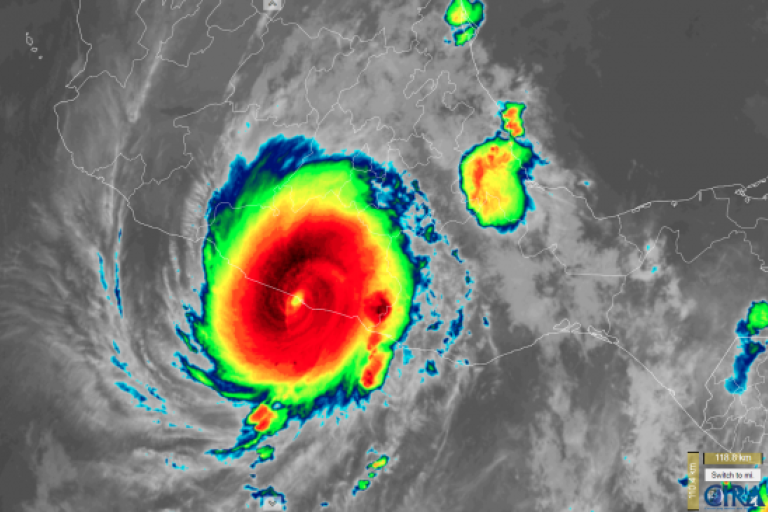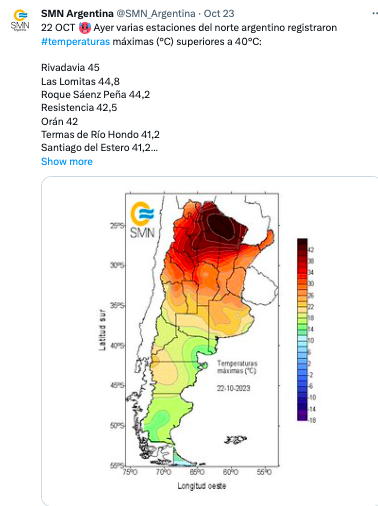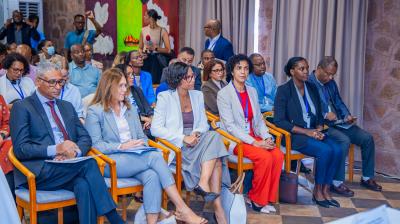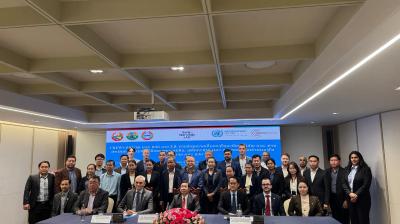Catastrophic hurricane hits as Latin America and Caribbean Week highlights climate action, early warnings
The Latin America and Caribbean Climate Week and a parallel Forum of Environment Ministers take place in Panama as the region is battered by record temperatures, drought and fires – as well as floods and storms. Hurricane Otis, one of the most rapidly intensifying tropical cyclones on record, made landfall on 25 October at top-level category 5 strength.

Otis made landfall near Acapulco in Mexico with maximum sustained winds of 265 km/h (165 mph), according to WMO Specialized Meteorological Center Miami. It warned of catastrophic storm surge and life-threatening winds and flash and urban floods.
"A nightmare scenario for southern Mexico. Otis has explosively intensified 95 kt during the past 24 hours, a mark only exceeded in modern times by Hurricane Patricia in 2015," said the US National Hurricane Center, which is WMO’s Regional Specialized Meteorological Centre.
Tropical cyclones are one of the world's biggest hazards.
“Your area is one of the hotspots. We are aware of the challenges you are facing because of the tropical storms, hurricanes and changes in the precipitation patterns driven partly by the impacts of climate change and partly by El Niño and La Niña,” said WMO Secretary-General Prof. Petteri Taalas.
He gave a video address to a high-level symposium co-organized by WMO on the role of National Meteorological and Hydrological Services (NMHSs) in "providing weather, water and climate services and early warnings for the protection of the environment and society and for the prevention of disasters."
The growing vulnerability of society and economies to high-impact weather is one of the driving motivations for the international Early Warnings For All initiative, which seeks to ensure that everyone on Earth is protected by life-saving early warnings – including small island developing states on the frontline of climate change, he said.
The outcomes of the symposium on 24 October will feed into the high-level segment of the Latin America and Caribbean Climate Week and the Forum of Environment Ministers meeting. One of the key messages to the Ministers is that NMHSs play a key role in increasing resilience and adaptation by serving strategic sectors and providing early warnings. The financial support to NMHS is a strategic national investment.
Ministers of Environment were invited to regard NMHSs as important actors in National Adaptation Plans and related climate financing initiatives.

Climate solutions and impacts
The region holds the key to multiple climate solutions. Its forests, mangroves and coral reefs serve as carbon sinks and natural defences against floods. It is also a clean energy leader, with almost 60% of energy generated from hydroelectric power and significant potential for wind and solar energy.
However, it is increasingly vulnerable to climate impacts.Map with deep red for heatwaves
Much of South America had its warmest winter on record, and maximum temperatures of above 40°C continue into spring in countries like Argentina, Bolivia and Paraguay. The Caribbean has also been gripped by extreme heat and drenched by late-season tropical storms.
The ongoing El Niño event is expected to further fuel land and ocean temperatures and more extreme weather – with heavy rain and floods in some parts of the region and drought in others.
Amazon drought
The worst drought on record is gripping the Amazon Basin and no respite is in sight. The Negro River in Manaus in mid-October broke the historical record for the lowest level since 1902 on 23 October at 13.59 meters.
Smoke from fires in Argentina, Brazil and Bolivia has been visible from space.
El Niño typically leads to suppressed rainfall in the Amazon Basin but scientists are increasingly worried that long-term climate change trends and deforestation are playing a role.
Deforestation means that Amazon rainforest soils store less moisture in the rainy season, and temperature increase is contributing to this. Recurrent fires have damaged vital ecosystems. Parts of the southern Amazon, which used to be a vital carbon sink risk becoming a net source of carbon because of fires, according to Carlos Nobre, a senior researcher, Institute of Advanced Studies, University of Sao Paulo, Brazil.
“To save the Amazon we have to tackle both global temperature increase and deforestation in the Amazon itself,” Prof. Nobre told a session of the World Climate Research Programme’s Open Science Conference in Kigali, Rwanda.
Sand and Dust Storms
The Caribbean region and South America are also vulnerable to dust storms, including incursions from the Sahara, which compound air quality problems.
Dust storms impact aviation and road transport; they reduce the performance of solar power plants and spread human pathogens, all of which negatively affect local and regional economies. The loss of soil nutrients costs agriculture more than US$ 8 billion dollars every year in the Pan-American region, according to a new WMO Airborne Dust Bulletin. It includes a map of dust vulnerability to support decision-makers in the region.
Urgent need for Action
The Latin America and Caribbean Climate Week is intended to contribute to the first global stocktake of the Paris Agreement – a crucial step to renew worldwide ambition at the UN Climate Change Conference (COP28) to keep global warming below 1.5 degrees Celsius.
An estimated 3,000 participants from across the region are expected to frame discussions around four key tracks, each designed to provide region-specific contributions.
It features four tracks will address challenges and solutions related to energy systems and industry; settlements, infrastructure and transport; land, ocean, food and water; as well as societies, health, livelihoods and economies, highlighting initiatives that are already underway and can be scaled up or implemented in the future.











